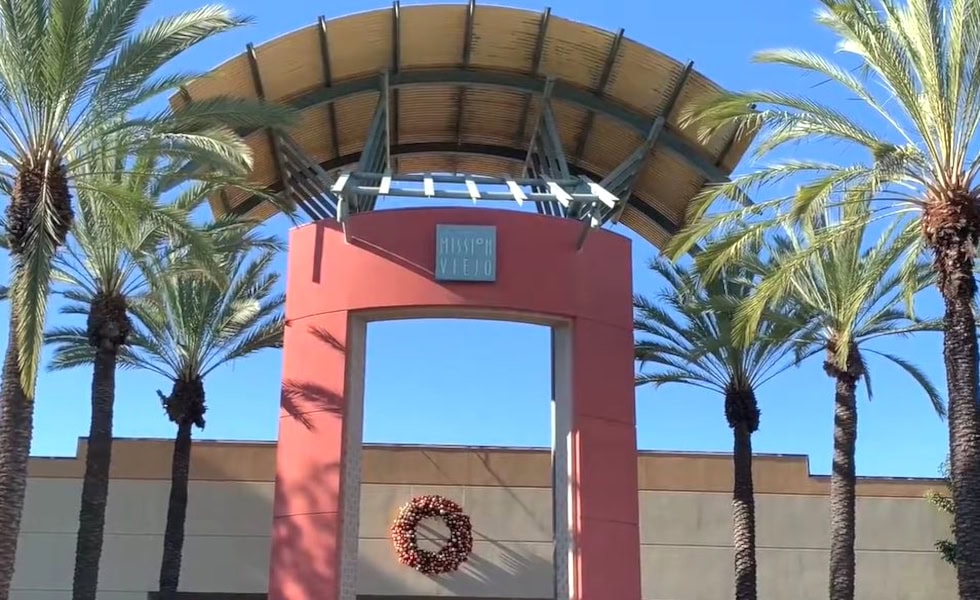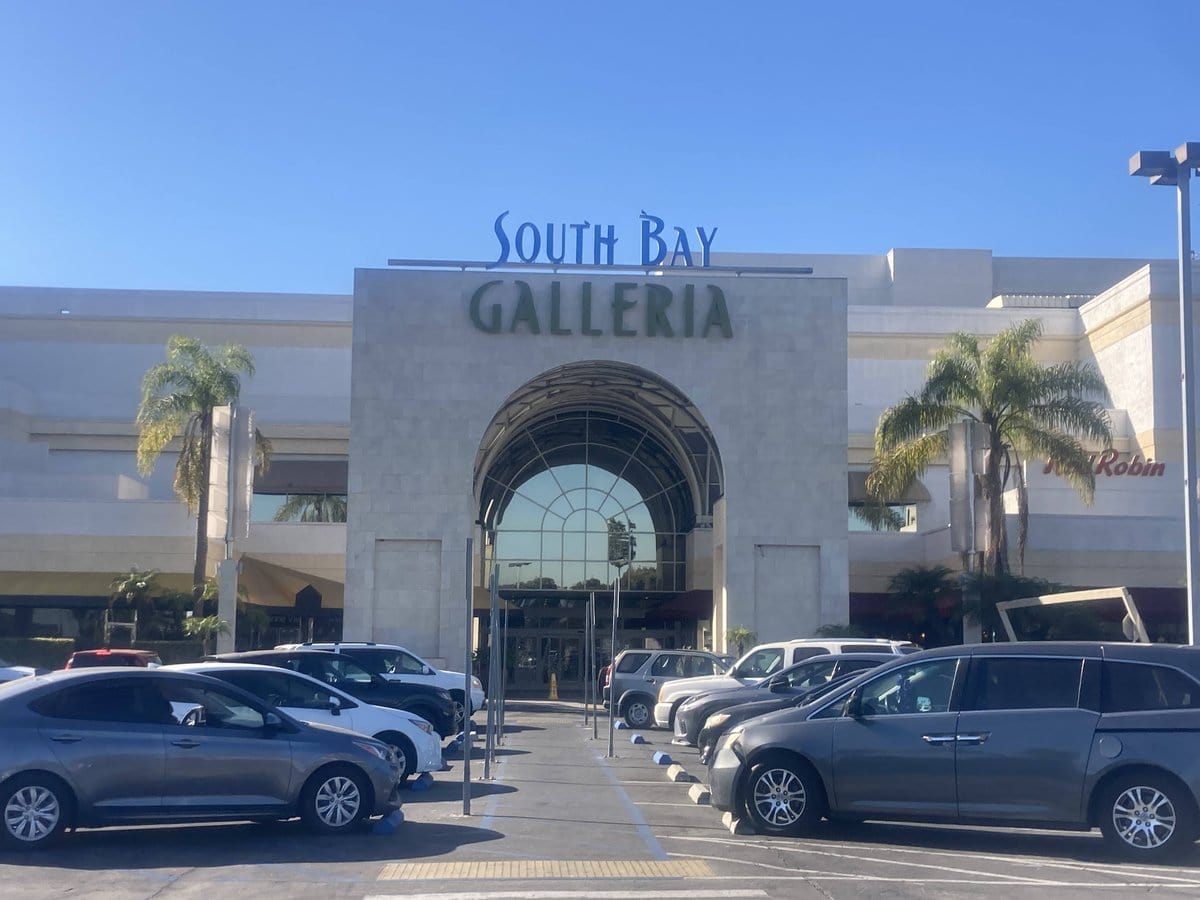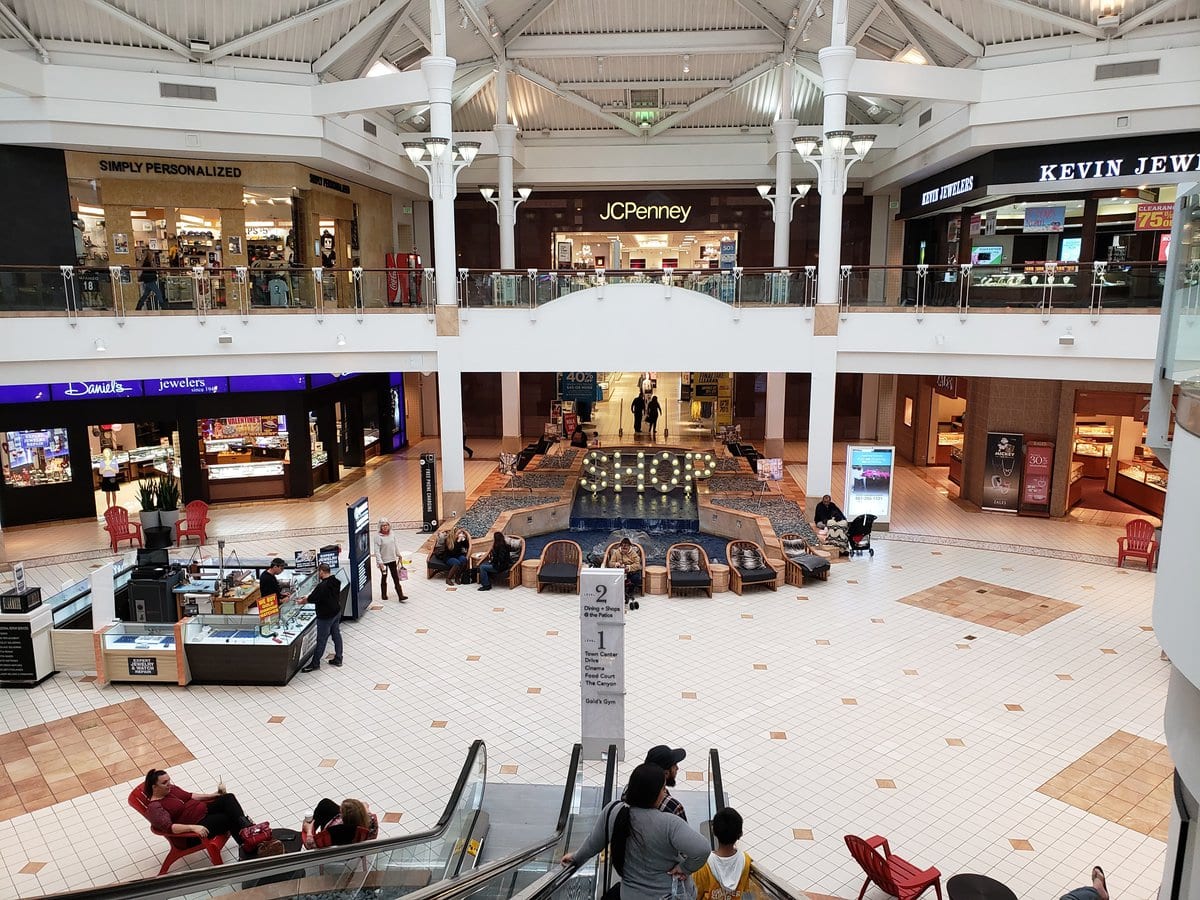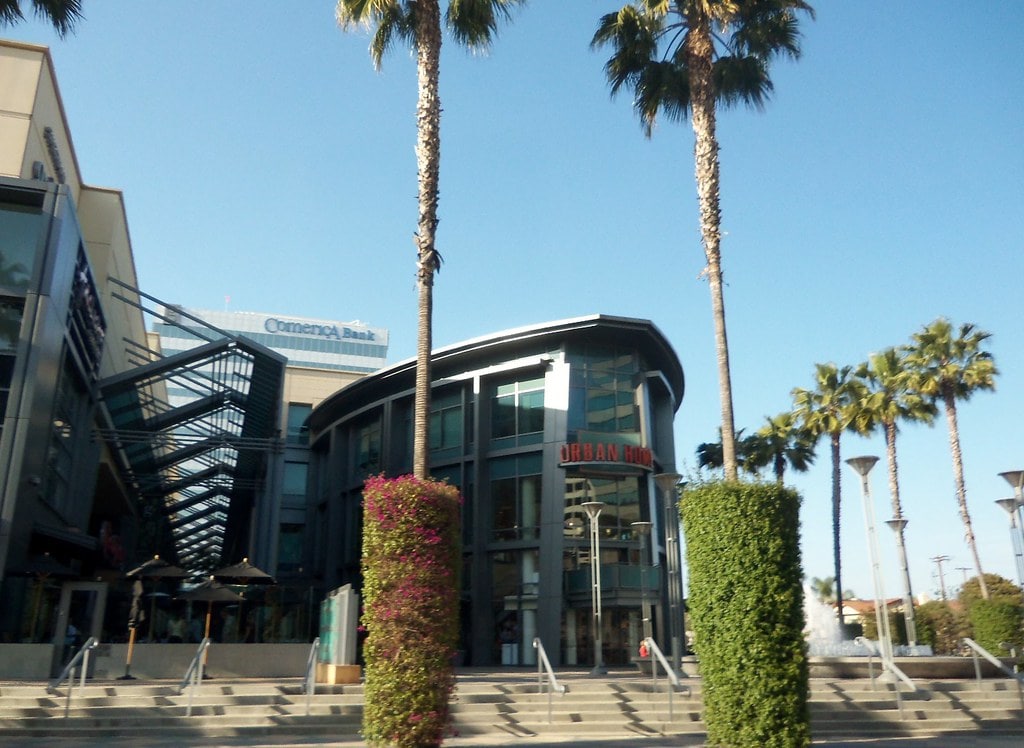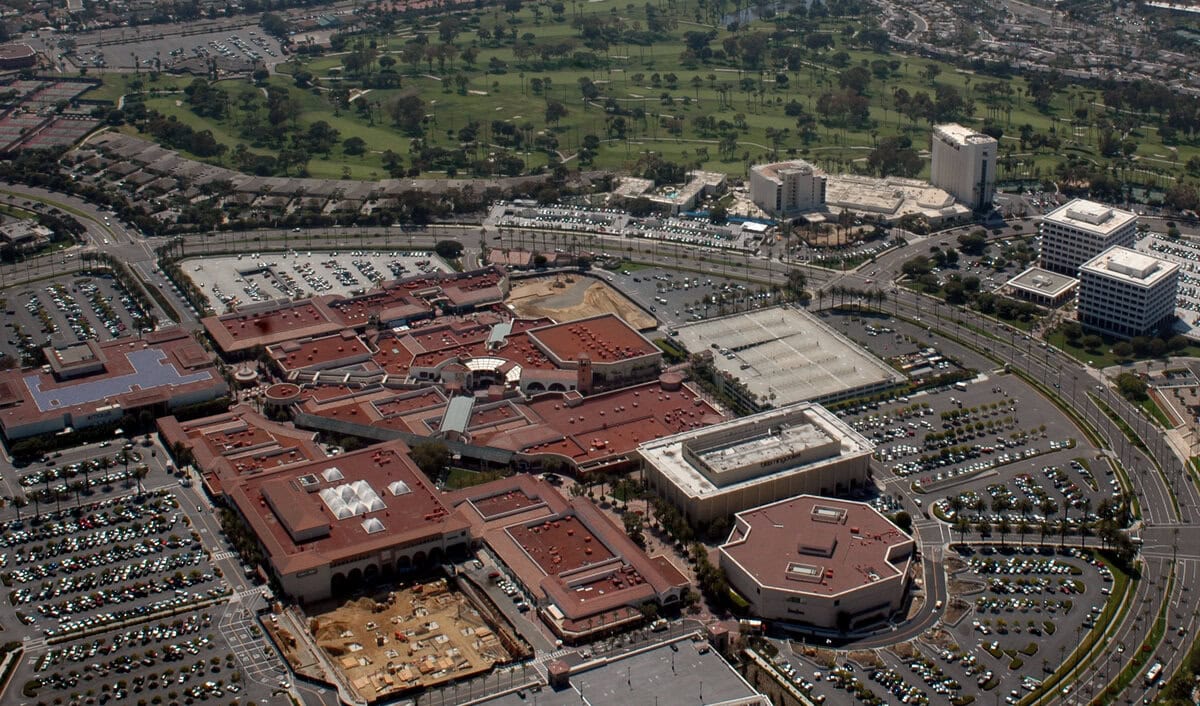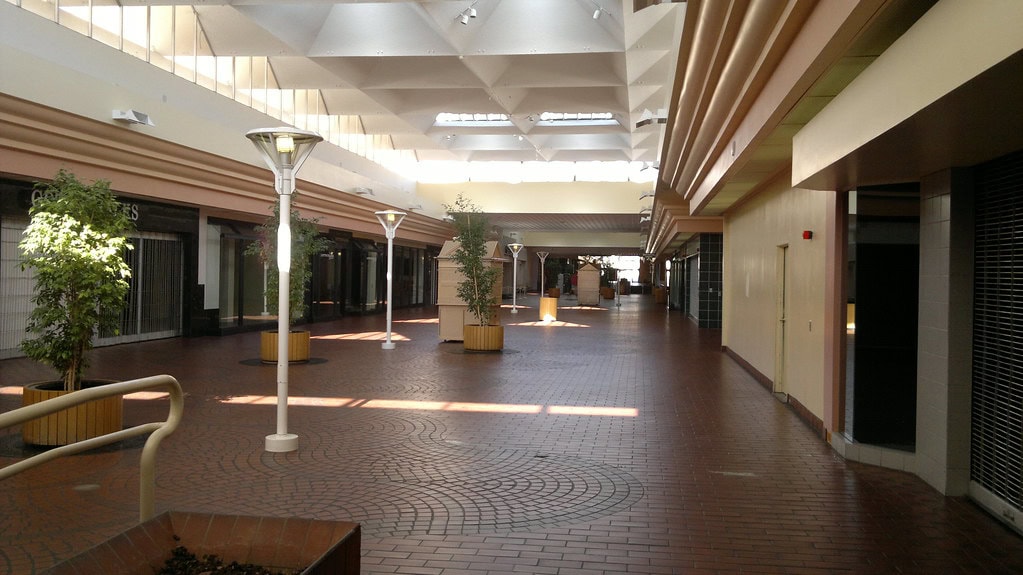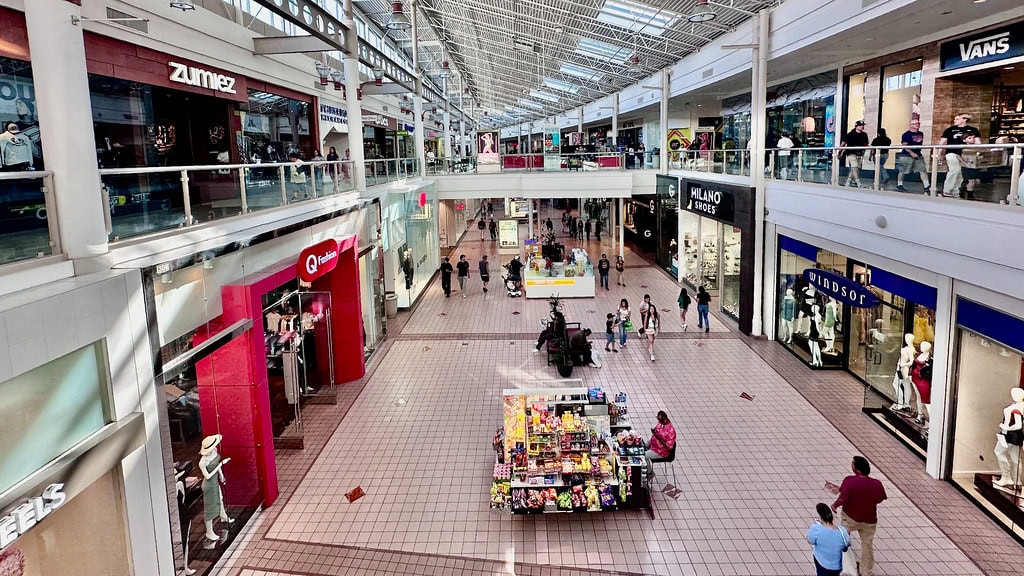Parkway Plaza and the Lost Castle Rock Ranch
On a hot afternoon in El Cajon, when the air over Interstate 8 shimmers and the parking lot feels even hotter than it should, Parkway Plaza looks like what it is: the main mall of East County, a huge, single-story, 1.3 million square foot tribute to air-conditioning, pavement, and making retail work in new ways.
Long before Sears and JCPenney showed up, though, this land was Castle Rock Ranch, part of a valley filled with vineyards, orange groves, and dirt roads.
The ranch was in a quieter El Cajon when most of the traffic on what is now Fletcher Parkway was farm-related, and the idea of 6,052 parking spaces would have seemed like a mistake in the records.
By the middle of the century, the main shopping area had moved to El Cajon Boulevard, a busy road for cars that did well from the 1920s through the 1950s.
Then the freeways were built, along with big malls at College Grove, Mission Valley, and Grossmont Center, and a new idea took hold about where people should shop.
Parkway Plaza, at the meeting point of I-8 and Highway 67, would be East County's answer to these changes, a closed-in escape from the desert heat and from the slow fading of the boulevard.
Heat and the Birth of East County's Indoor Mall
The first part of Parkway Plaza opened on August 5, 1969, when Sears Roebuck opened by itself on the west side of the property, standing alone in what would later become a big parking lot.
The whole mall was built in the early 1970s, and it was only the third indoor shopping center in San Diego County, after Escondido Village Mall in Escondido and Plaza Camino Real in Carlsbad.
The decision to make it an indoor mall was more about the weather than about looks. El Cajon's summers are so hot that having a walkway inside was just as important as any other feature.
The original mall's design was bold but also low-key. The north entrance had a roof with sharp shapes, showing "Parkway Plaza" in red letters on plain brick.
Most of the stores faced inside. Outside, sloped planters hid the areas where trucks made deliveries.
Farrell's Ice Cream Parlour and the movie theaters were some of the only places that faced the parking lot.
Inside, the mall had 1970s-style decorations, skylights, and planters built into the floor, creating a planned version of public space: lots of benches, plenty of plants, and no bad weather.
That was the idea. In a valley where summer could make a steering wheel too hot to touch, Parkway Plaza offered a comfortable place for people to gather at 72 degrees all year.
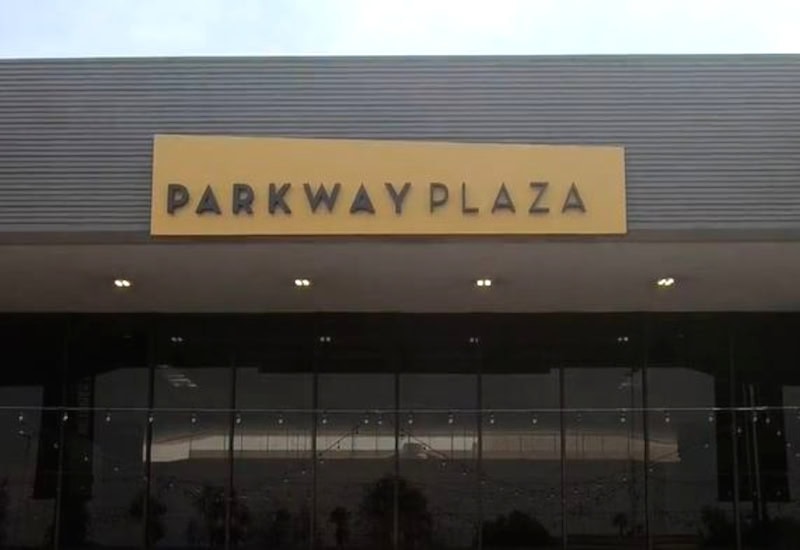
From Sears to Sundaes, a Cast of Anchors
When the mall first opened, three large national stores were placed around the edges.
Sears was on the west side, Woolworth's was in the middle on the south, and May Company was on the east end. Together, they sold things like home appliances, bargains, and clothes for adults.
Smaller, dependable shops opened nearby, like a three-screen movie theater, the Food Basket grocery store (which later became Lucky), and Shakey's Pizza, where the smell of baking dough tried to be stronger than the smell of new polyester clothes.
Farrell's Ice Cream Parlour, near May Company, brought the kind of fun and excitement that every mall wants.
Decorated to look like the 1890s, with player pianos, striped vests, and straw hats, Farrell's was all about sweet treats and putting on a show.
Kids got sung to on their birthdays and got free sundaes.
Parkway Plaza in the 1970s was that kind of place: very suburban, a little bit hopeful, and sure that an ice cream shop and a movie theater could keep people coming.
Bigger, Brighter, Busier: the Boom Years
By the 1980s, East County's population and needs had outgrown the original plan.
Plans came up to make Parkway Plaza about 460,000 square feet bigger, add three new department stores, and squeeze in 1,800 more parking spaces with two garages that each had three levels.
The details changed, but the idea was simple: more building, more cars, more big store signs you could see from the freeway. New stores opened one after another.
Mervyn's, a department store for average shoppers, opened in 1989, JCPenney came in 1990, and the mall added a food court in 1991, showing that people wanted more than just shopping at one store at a time.
That same year, a 1926 Allan Herschell carousel with carved horses and a traveling carnival past was set up inside, an old favorite spinning under bright lights.
In 1993, May Company changed its name to Robinsons-May, as the store was getting a new ID. Woolworth's closed in 1997, and its spot became Sport Chalet before turning into Regal Cinemas in 1999.
The carousel itself would end up moving around: sent to Ohio in 2003, replaced by a two-story version in 2004, then sent to Wichita in 2016, with later rumors about it possibly coming back.
The mall, in other words, was already changing itself long before anyone talked about a "redevelopment plan."
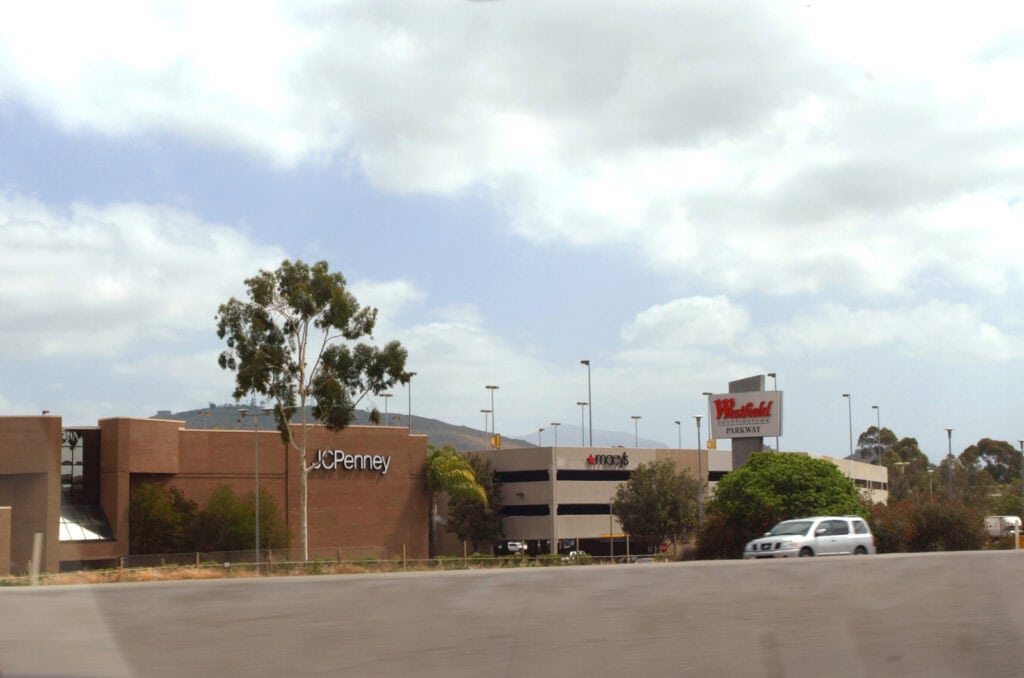
Names on the Doors, Numbers on the Books
If the 1980s were about making the mall bigger, the late 1990s and 2000s were about who owned the mall and how much profit they could get from it.
In 1998, Westfield America bought Parkway Plaza as part of a billion-dollar deal, quickly changing its name to "Westfield Shoppingtown Parkway," and then, thankfully, to "Westfield Parkway Plaza." At the time, the mall had over a million square feet, four main anchor stores, and about 175 smaller shops that together made around $210 million in sales each year.
The mall kept changing in ways people had seen before. Walmart opened a two-story store in October 2004, only its second store like this after the nearby Grossmont Center, basically adding a big chain store to the mall.
When Robinsons-May became Macy's in 2006, the store at the east end changed its sign but stayed as East County's main department store.
Mervyn's, however, had a hard time. The chain went out of business, said it would close all its stores in 2008, and shut down its Parkway Plaza location in January 2009, leaving a very noticeable empty space.
By 2011, that space had been split into a new kind of main store: Crunch Fitness upstairs, with TRX straps, Bosu balls, and $9.95 a month memberships; Dick's Sporting Goods downstairs, with golf simulators and a grand opening with professional athletes.
The message was clear: just selling products was not enough anymore. You had to sell a way of life, or at least the things people use for it.
When the Anchors Fall, Cracks in the Mall
Complicated financial deals started affecting real estate in the mid-2010s.
Sears, which had been on the west side for a long time, had its property separated into a new company called Seritage Growth Properties in 2015, then closed along with many other stores across the country.
Its Parkway Plaza store closed in July 2018.
Parts of the empty building were quickly rented out to Ashley HomeStore, Bob's Discount Furniture, Burlington, and Extra Space Storage, turning what used to be one huge department store into a group of furniture stores and a self-storage area.
More problems followed. During the pandemic, Macy's, which had taken over from May Company and Robinsons-May, said in early 2021 that it would close its Parkway Plaza store.
By April, it was shut. In February 2024, Walmart left, too, after saying that the two-story store at 605 Fletcher Parkway would close on the 9th because it was not making enough money and the lease was ending.
About 230 jobs were affected, but the company said it would try to move workers to other stores. JCPenney kept going as the last traditional department store anchor.
Safety concerns, which are always a part of any big mall, started to become more obvious. In April 2024, local police announced arrests in two shoplifting cases at Dick's Sporting Goods.
Just over a year later, in June 2025, a fight inside Spencer's turned into an attempted murder case: a 17-year-old boy said someone pointed a gun at his head and pulled the trigger.
The gun did not fire. Four people, including another teenager, were later arrested, and two guns were found.
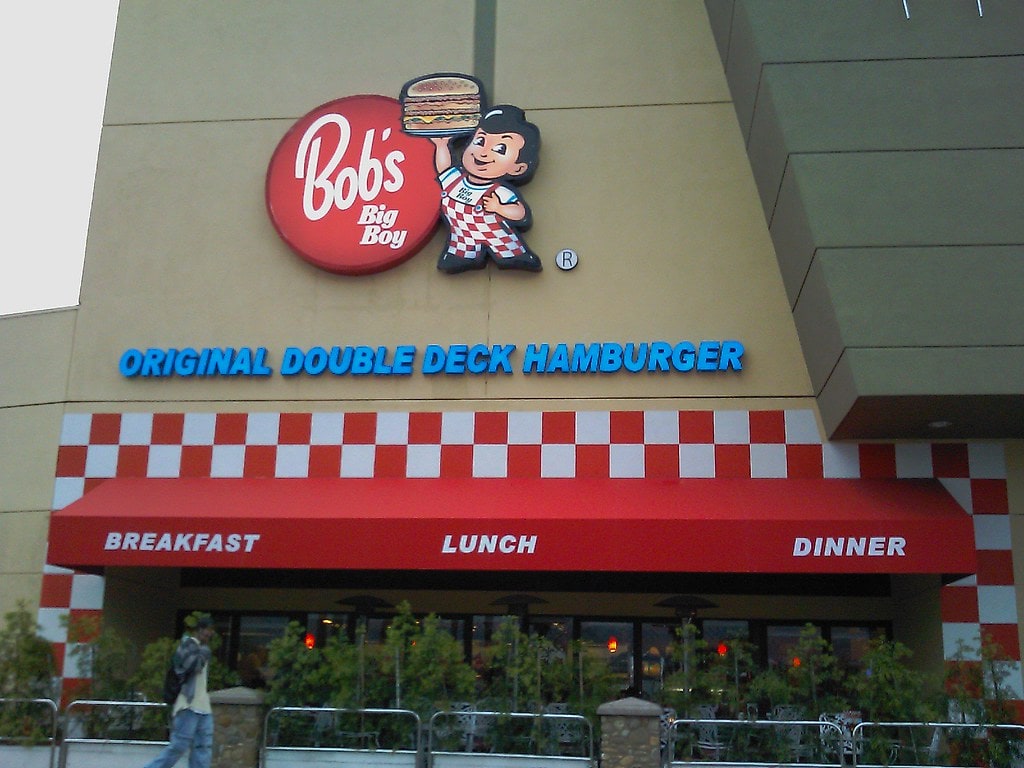
Turning a Mall into a Neighborhood
When Walmart closed, El Cajon officials started to ask a tough but important question: What if Parkway Plaza stopped being just a mall and became a neighborhood with a mall inside it?
In 2024, the city brought in experts to come up with new ideas.
These ideas would shrink the mall, turn empty stores and extra parking into 300 to 350 housing units, add hotels along Interstate 8, and create new places to eat and have fun.
The word "eatertainment" may sound like something only consultants say, but it does describe a sports bar that wants to offer more.
Two main ideas came from these plans. The first would split the indoor mall in half and rebuild it around a central area with homes, shops, and public spaces.
This could bring in at least $10 million more each year for the city, if they can make up the money they are missing, which is about 45 percent of the total cost.
The second idea would keep more of the mall's building but open up the center, put the popular stores near the food court and Regal Cinemas, and add hotels and new shops facing Fletcher Parkway.
Both plans would need several owners to work together and would use special ways to pay for improvements. The process would take time.
Workshops, Worries, and What Comes Next
In November 2025, the city convened an online community meeting devoted to new ideas for Parkway Plaza, the first in a series of sessions meant to turn sketches into something closer to policy.
The discussion centered on a familiar contemporary vocabulary - mixed-use districts, housing above shops, outdoor gathering spaces - and on the possibility of financial sweeteners for whichever developers were willing to take on an aging, overparked property that still draws millions of visitors a year.
Outside the meeting format, the conversation sounds different.
Many longtime East County residents who first came to Parkway Plaza in the early 1970s, often arriving by the old back road along old Highway 94, now talk less about particular stores and more about whether the place will remain a civic living room or sink into being a mere passageway between the parking lot and the exit signs.
City officials, by contrast, tend to speak in numbers: sales-tax receipts, the attrition of anchors, the cautionary tales of malls that hollowed out and never recovered.
On one point, there is broad agreement - this site is too important to leave untouched.
Whether its next version will be a genuinely mixed urban district or simply a more polished arrangement of asphalt and retail boxes remains, for the moment, an open question.


